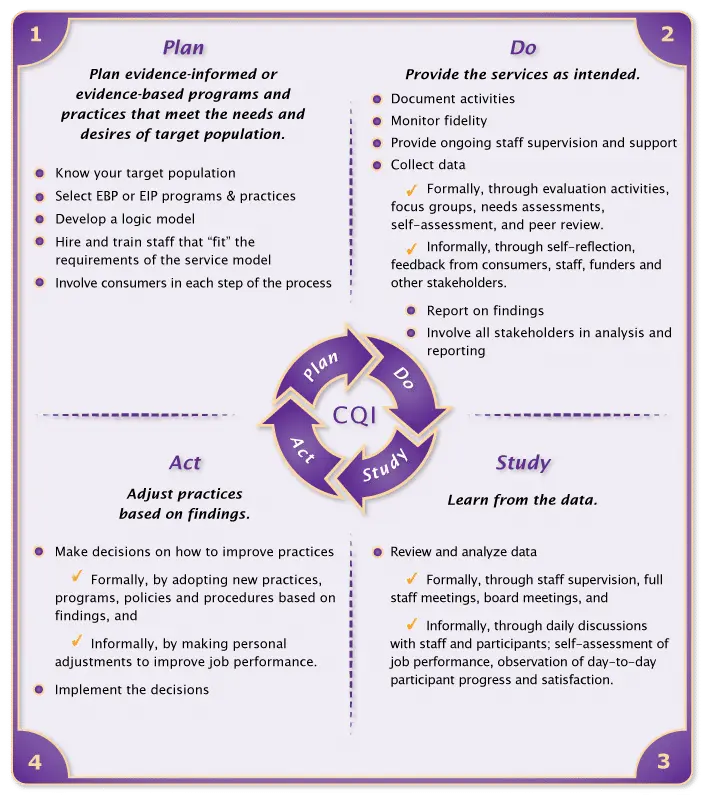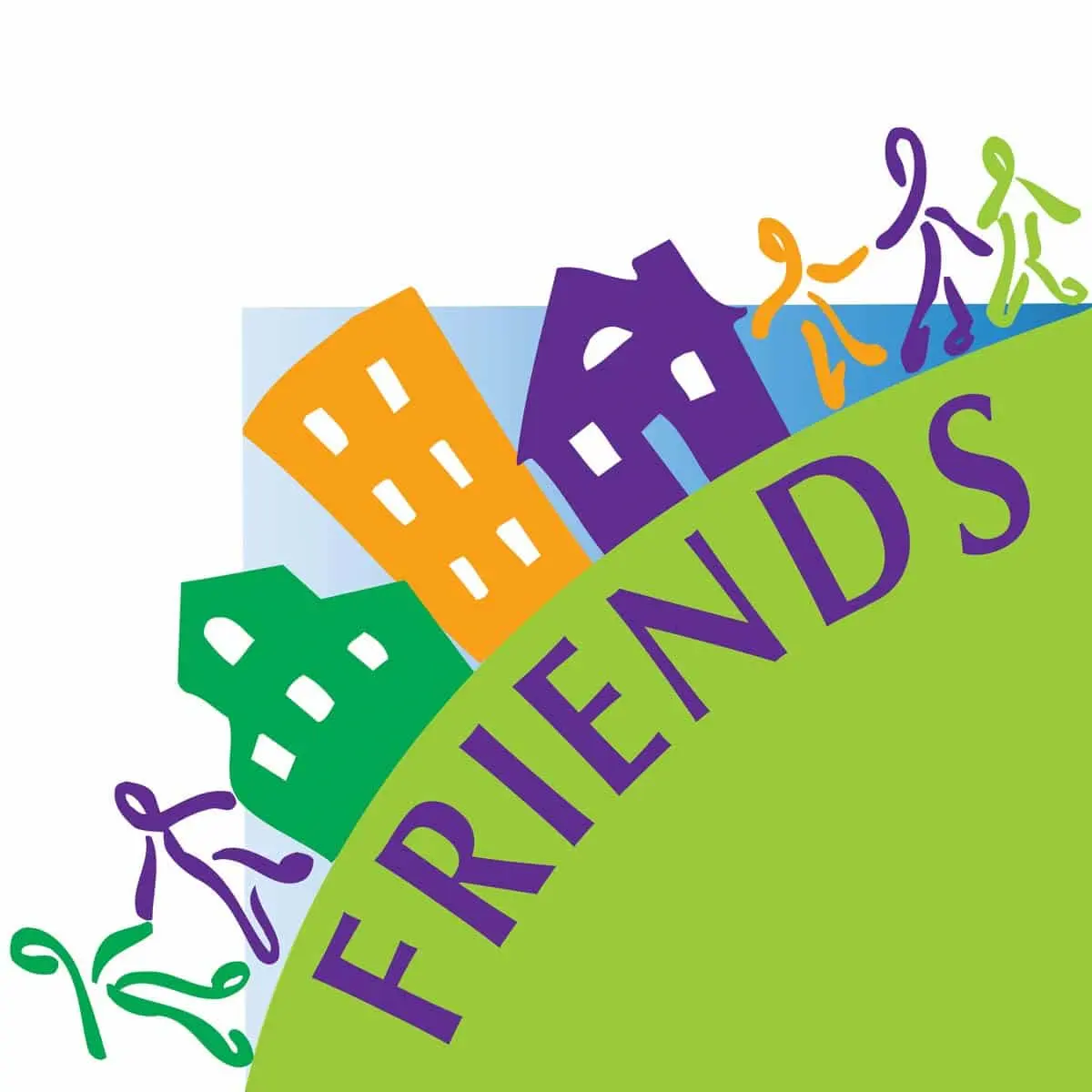Continuous Quality Improvement
Continuous Quality Improvement (CQI) is a process to ensure programs are systematically and intentionally improving services and increasing positive outcomes for the families they serve. CQI is a cyclical, data-driven process; it is proactive, not reactive.
A CQI environment is one in which data is collected and used to makes positive changes—even when things are going well—rather than waiting for something to go wrong and then fixing it. CQI is an ongoing process that involves the Plan, Do, Study, Act cycle.

Some terms referenced above or related to the topic of CQI:
Evidence-Based Practices are approaches to prevention or treatment that are validated by some form of documented scientific evidence. Evidence-based practices can include findings established through scientific research, such as controlled clinical studies, but other methods of determining evidence are valid as well. There are different types of evidence-based practices; these include “supported” or “well supported,” based on the strength of the research design.
Evidence-Based Programs – Evidence-based programs use a defined curriculum or set of services that, when implemented with fidelity as a whole, have been validated by some form of documented scientific evidence. Different types of evidence-based programs include “supported” or “well-supported” based on the strength of the research design.
Evidence-Informed Practices – Evidence-informed practices use the best available research and practice knowledge to guide program design and implementation within context. This informed practice allows for innovation and incorporates the lessons learned from the existing research literature.
For more details related to evidence-based and evidence-informed programs and practices, visit the Evidence-Based Practice Section of the site.
Fidelity – Fidelity to a model means the services provided are faithful to the core components of a curriculum or program as specified by the model developer(s).
To learn more about fidelity to a model and its critical relationship to effective services, visit the National Implementation Research Network (NIRN) website at http://nirn.fpg.unc.edu/.
Logic Model – A logic model is a program map. It is a simple, logical illustration of what the program does, why the program does it, and how observers will know if the program is successful. There is a wide variety of logic-model formats. Still, most have the same vital components, including the anticipated outcomes of the program and the services provided to achieve the outcomes.
For more information, go to the Logic Model section on this site.
Quality Assurance (QA) – This term refers to ensuring that services and products efficiently and reliably satisfy consumer needs. It has a strong emphasis on identifying and providing services most likely to achieve targeted outcomes and consumer satisfaction, and in monitoring whether or not the services were provided.
Quality Improvement (QI) – This term refers to activities for evaluating services and for ensuring that the necessary resources and supports are in place to facilitate ongoing enhancements and improvement. It stresses the use of data in making decisions for program improvement. The National Child Welfare Resource Center for Organizational Improvement (http://muskie.usm.maine.edu/helpkids/) describes QI as a system ”. . . that supports a child welfare agency’s values, vision and mission through ongoing data and information collection and analysis and the regular use of QI results to make decisions, improve practice and achieve better outcomes for children and families.”
For more perspectives on Quality Assurance and Quality Improvement, visit the following website:
- The National Child Welfare Resource Center for Organizational Improvement paper, Framework for Quality Assurance in Child Welfare, as of September 2010, available at http://muskie.usm.maine.edu/helpkids/rcpdfs/QA.pdf
